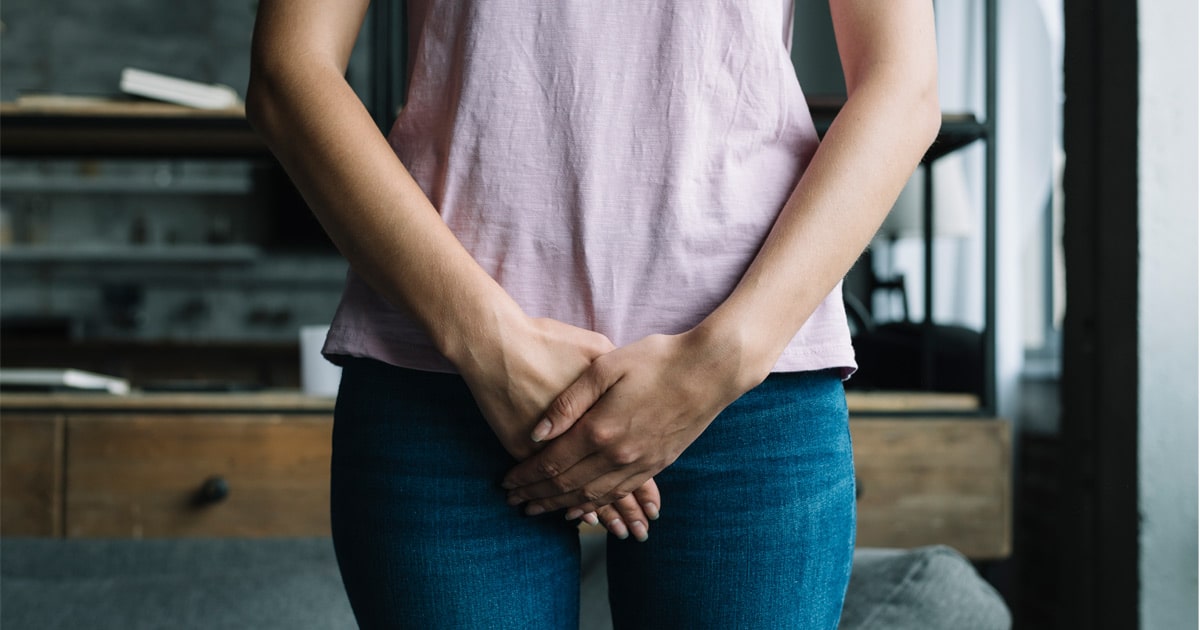
Your Pelvic Floor After Giving Birth : It’s Common to Have the Urge to Pee!
Par Melanie Kusznireckyj, naturopath, doula and dancer
So you’ve had a child? Or you’re pregnant? I want to congratulate you for this exciting and self-affirming adventure!
I can imagine that you’ve learned a lot during this period : psychologically during the birth, emotionally with the arrival of baby, and physically with all the changes your body has gone through during pregnancy.
Psychologically you’ve overcome your fears and the unknown, and emotionally the highs and lows of motherhood has taught you how to deal with this new routine.
Accepting and dealing with changes
In speaking with mothers, I’ve noticed that women often have a particularly hard time accepting and dealing with all of the physical changes in their body. I’ve noticed that at least half of the women I speak with will not mention a condition that can develop during or after giving birth : incontinence and its associated symptoms. I have the impression that women tend to accept this as normal after giving birth.
And yes, up until 6 weeks postpartum it is quite common, the body needs some time after giving birth to heal.
However many women’s quality of life continues to be affected long-after.
A study in Great-Britain found that 85% of women will suffer from trauma to the perineum during birth (1). This trauma can contribute to incontinence (2). The pertinence of incontinence during first year post-partum, according to a scientific journal of cohorts of populations, was 33% (for any kind of incontinence), and women having weekly symptoms is 12% and women who have daily difficulties is at 3% (3)
If we look at the causes of incontinence, scientific obstetrics hasn’t identified one single cause, but a combination of contributors such as : the size of the baby, the birth length and pushing phase, the use of tools (4). The connected problems include vaginal or bladder prolapse and fecal incontinence.
Problems associated with pelvic floor disorders can greatly affect a woman’s quality of life, such as during exercise, during social settings and by increasing pain in the perineum, pelvis or during sexual relations.
There are 3 common types of incontinence :
-
- stress incontinence : most often linked to birth, and felt when there is effort such as during exercise, when we laugh, cough, sneeze,…
- urge incontinence : lthe sudden and uncontrollable loss of urine when we get an urge to go. This is be caused by nerve signals that can affect the contraction of the bladder
- hyperactive bladder : frequent urination, urge
</ol
*It is also possible to have mixed incontinence, which combines the different types of incontinence.
Prevention
Prevention has been discovered through scientific observation and several analytical studies. One study by Wesnes and Lose in 2013 (5) published a study with many different levels of proof (grade A being the greatest proof) for the prevention of urinary incontinence associated with pregnancy :
Greatest proof (grade A) :
-
-
- strengthening of pelvic floor and after pregnancy (6)
-
Medium proof (grade B) :
-
-
- Refraining from smoking during pregnancy
- Having a normal weight before pregnancy (not losing nor gaining weight just before becoming pregnant) and returning to a normal weight after birth
- Using hot compresses on the perineum during birth (having a doula)
- Avoiding constipation during pregnancy
-
Weak proof (grade C)
-
-
- Avoiding constipation post-partum
-
No proof (grade D)
-
-
- Cesareans are not recommended to help avoid incontinence
-
Perineal massage at the end of pregnancy:
Studies show that perineal massage in the 34-35th week, 1-2 times per week (not more!) reduces the risk of needing episiotomies, chronic pain in the perineum, but only for a first delivery (7,8).
A study has shown that perineal massage is positive for 2 populations :
-
-
- first birth
- in women who have already had episiotomies in their previous birth (9)
-
How can naturopathy help :/h3>
Right after birth :
- Arnica 30CH, homeopathy to reduce inflammation
- Herbal compresses to help healing of perineum : https://mamacomfort.wordpress.com/
- You can also make your own compress with Witch Hazel (without alcohol) and water on a cotton compress, frozen
- Sitz bath with Epsom salt
Nutrition :
- Avoid stimulants (coffee, chocolate)
- Careful with diuretics (nettle, which is recommended after birth, is a diuretic)
- Citrus
- Tomatoes
- Alcohol
- Spicy foods
Increase your intake of collagen (improves elasticity, strength and stability)
- probiotics
- fermented foods such as kefir, miso, kimchi
- bone broth
- Vitamin C
Natural remedies:
- Cell de Schuessler Calf-flour 6X, homoopathy to strengthen muscles and ligaments, to improve elasticity
- Postpartum Homeopathy : Causticum, Sepia, Puls, Staphysagria – each remedy has independant benefits for your symptoms so it’s best to consult a professional for the recommendations
- Digestive enzymes for scar tissues
Health professional can help guide and support you. If you have any pelvic floor issues, your first line of defense is seeing a pelvic floor physio. From there, you can also see an osteopath, acupuncturist, naturopath or pelvic floor/pre and post-natal specialized exercise professional.
By identifying the ‘why’ – muscular, nervous, scarring – the support will be focused and accurate. *<br />
About Melanie :
I’m a naturopath from an accredited school in north America, the Canadian College of Naturopathic Medecine in Toronto. I’m also a doula and dancer.
*please consult your doctor or naturopath before taking any medication
Melanie K
7464 St-Denis, Montreal, H2R 2E4
montrealnd@gmail.com 514-755.6629
www.montrealind.org

